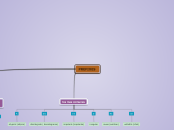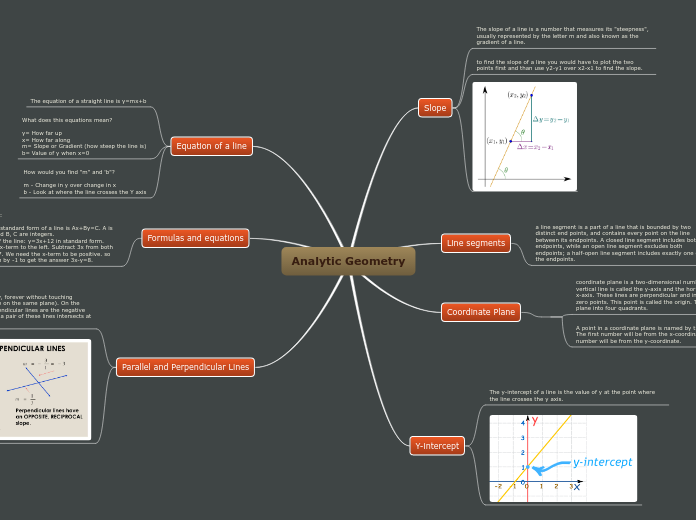Bond Polarity
Difference in ENs of bonded atoms
Polar covalent bond
dipole
picture
Partially negative end (electron rich)
δ+
Partially positive end (electron deficient)
δ-
Unequal Sharing
Non-polar covalent bond
Equal sharing
Molecular Polairty
Non-polar
Symmetrical
Polar
one positive end
one negative end
lone pairs
Asymmetrical
Intermolecular Forces
Ion Dipole
Induced dipole-dipole
Hydrogen Bonding
London Dispersion Force
Electronegativity (EN)
contain
Shared Electrons
Transfer of Electrons
can be
Intramolecular Forces
Strength
Weak Base
Strong Base
Weak Acid
Strong Acid
Example of Criss Cross
NM + NM
M + NM
Matter
Chemical Properties
Physical Properties
Types of Matter
Pure Substances
Compounds
Molecules
Elements
Atoms
Parts
Shells
Electrons (- charge)
Valence Electrons
Stability
Octet Rule
Boron and Beryllium
Nucleus
Neutrons (no charge)
Protons (+ charge)
Properties
Atomic Mass
Mass Number
Isotopes
Atomic Number
Mixtures
Heterogenous
Homogenous
States of Matter
Bose-Einstien Condensate
NOTE: Connect back to Gase unit
Plasma
Gas
Liquid
Solid
100% dissociated in water
Less than 100% dissociated in water
Less than 100% ionized in water
100% ionized in water
Periodic Table
Groups
Periods
Non-metal (NM)
Metal (M)
Metalloids
include
artificially made
(WIP) NET IONIC AND PERCIPITATION
represented as
Symbols
Aqueous (aq)
Liquid (l)
Solid (s)
Gas (g)
are
if
Logarithmic Equations
[OH⁻] = 10⁻^pOH
[H₃O⁺/H⁺] = 10⁻^pH
pOH = -log[OH⁻]
pH = -log[H₃O⁺/H⁺]
pH + pOH = 14
such as
Ionization/Dissociation
NH₃(aq) + H₂O(l) -> NH₄⁺(aq) + OH⁻(aq)
NaOH(aq) + H₂O(l) -> Na⁺(aq) + OH⁻(aq)
CH₃COOH(aq) + H₂O(l) -> CH₃COOH⁻(aq) + H(aq)
HCl(aq) + H₂O(l) -> H₃O⁺(aq) + Cl⁻(aq)
pH Scale
Picture of ph Scale
Basic/Alkaline
Neutral
Acidic
Hydroxide Ion Concentration [OH-]
Hydronium/Hydrogen Ion Concentration [H30+/H+]
SCH3U0-D
Matter, Chemical Trends and Chemical Bonding
Nomenclature
All Non-metals (NM) have - charge
Anion
All Metals (M) have + charge
Cation
Bonds
Ionic
Ionic Compound
Multivalent Compound
Metal has more than one charge
roman numerals (e.g. I, II, IV, V)
Polyatomic Ion
Covalent
Diatomic
HOFBRNCl
Molecular Compound
Metallic
M + M
Hydrate
*H₂O
Base
Acid
Binary Acid
Oxyacid
Criss Cross
Simplify Formula
Chemical Reactions
Equations
Complete Ionic Equations
Net Ionic Equations
Chemical Equations
Stoichiometry
2KI(aq) + Pb(NO₃)₂(aq) → 2KNO₃(aq) + PbI₂(s)
Balanced (Equal number of atoms on reactant and product side)
Word Equation
Sodium + Chloride -> Sodium Chloride
Types of Reactions
Oxidations
Non-metal Oxide
Metal Oxide
Displacements
Activity Series
Element's reactivity relative to each other
Displacment occurs quicker
Compound's element if it's below
Single Displacement
A(non-metal) + B(metal)C -> AB + C
A(metal) + B(metal)C -> AC + B
Double Displacement
AB + CD -> AD + CB
Precipitate
ionic formed
insouluble (connect to solutions unit)
Combustion
Fuel
Incomplete Combustion
limited oxygen
Carbon Dioxide, Water Vapor, and Energy + Carbon Monoxide and/or Soot (Carbon)
Complete Combustion
extra oxygen gas
"Connect the extra and limited to the concept of excess reagent and limited reagent"
Carbon Dioxide, Water Vapor, and Energy
Neutralization
A salt and water
Decomposition
AB -> A + B
Synthesis
A + B -> AB
Reactants and Products
Observations
An indicator may not necessarily be a chemical change, but physical.
Painting a car (change in color) is a physical change. While a solution changing color is a chemical change
Physical Changes
Chemical Composition
Texture
Change in States of Matter
endothermic
exothermic
Melting Point
Boiling Point
Shape
Chemical Changes
Irreversible
Odor
Color
Bubbles/Gas
New Substance
Heat/Light
Solutions and Stoichemetry
Colloid
Suspension +(precipitate)
Solution
Components
Solubility
Amount of solute per amount of solvent: e.g. 36.0 NaCl/100g of H20 at 20°C
Solubility Curves
Saturated
Supersaturated
Unsaturated
Solubility Factors
Subtopic
Pressure
Temperature
Concentration
C₁V₁ = C₂V₂
Molar Concentrations
M = n/V
Very Small Concentrations
Parts Per Trillion
ppt = solute/solution * 10^12
Parts Per Billion
ppb = solute/solution * 10^9
Parts Per Million
ppm = solute/solution * 10^6
Solution Concentrations
Percentage Mass(g) (%m/m)
Percentage Mass(g) by Volume(L) (%m/V)
Percentage by Volume(L) (%V/V)
% C (m/V) = msolute/Vsolution
Solute
Solvent
Golden Rule "Like Dissolves Like"
Gases and Atmospheric Pressure
Quantities of Chemical Reactions









